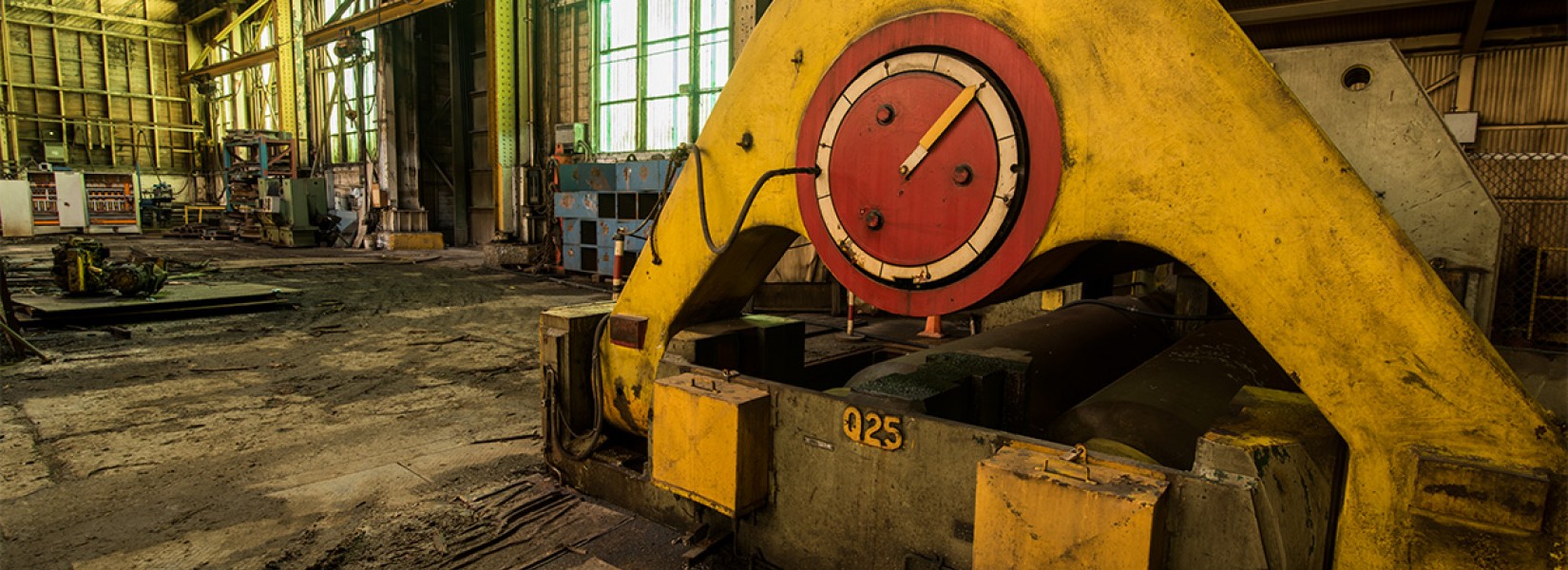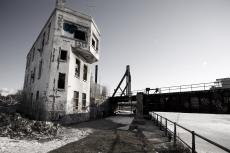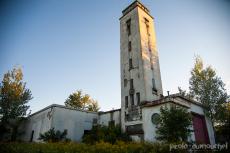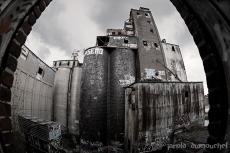Built in 1930, the Wellington tower has ceased operations in 2000. Despite the years that have passed and graffiti artists who came to express their art, the structure of the old tower is still ok. When it was in operation, that's where that were...
The old superstructures plant
Iron and steel
More than a century of expertise in the construction of mega steel structure that represents hundreds of projects from coast to coast. The company's story began in 1879 in Toronto, where a group of businessmen sniff a bargain following the imposition by the Macdonald government of a protectionist tariff and an important increase in the demand for steel for the construction of the trans-Canada railway.
In the year 1882, the company is moved to Montreal in order to have the plant as near as possible from the major Canadian railways. Then began the construction of the plant in 1883 and ended two years later. The first realization of the company will be inaugurated in 1886. On the menu: a railway bridge (still active) connecting Lachine to Kahnawake located on the south shore of Montreal, at the east of Chateauguay.
If the company initially specialized in the construction of bridges, it will quickly add realizing skyscrapers to its offer, seeing their rapid growth in the major cities. In the early twentieth century, the company will continue its diversification, constantly enlarging its facilities. It thus will launch in the manufacture of equipment for paper mills and hydroelectric plants at that time.
When World War II start, women are entering the factory obliged to participate in the war effort. During the war, the plant will produce bombshells for the Allied forces but will be back on track after the end of the war.
Among the company's achievements include the Alexandria Bridge between Ottawa and Gatineau in 1901, Jacques Cartier Bridge linking Montreal and Longueuil (1929), the Mercier Bridge linking Lasalle and Kahnawake (1934), the bridge of Orleans island (1935), the Champlain bridge linking Montreal and Brossard (1962), the Telus tower (1962) and much more.
Today, while some portions of the plant are occupied by independent companies, the majority of the site is abandoned. Frequent shootings come to offer its owner a good extra income. This explains why there is a in-ground pool inside...
Nevertheless, the site's future remains uncertain. While older neighboring industrial sites will be converted soon into large residential complexes, the same fate could befall the company's facilities. The future will tell us...
Related content
Located on the banks of the Canal Lachine, the old Cie de recyclage de papier de Montréal inc. factory have been destroyed in part since 2009. Today, there are only the old building located behind the front store who is still there.
When...
The abandoned Val Rose plant is unquestionably one of the most famous spots in Quebec City area. And honestly, I was rather reluctant to go there. Not that I thought the spot wasn't interesting, but in general, a place known as the Val Rose is,...
Built in the early twentieth century, the former Canada Malting plant has a dozen gigantic silos of 37 meters high. The oldest was built in 1905. Hundreds of employees worked there after the Second World War, until the closure of the factory at...







































